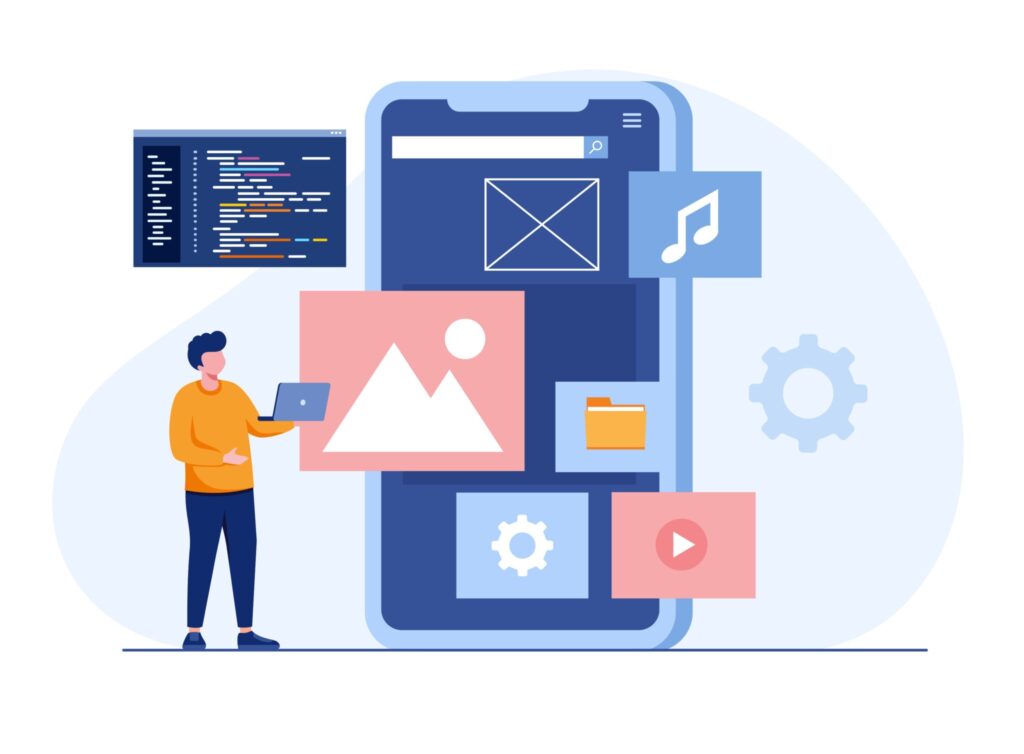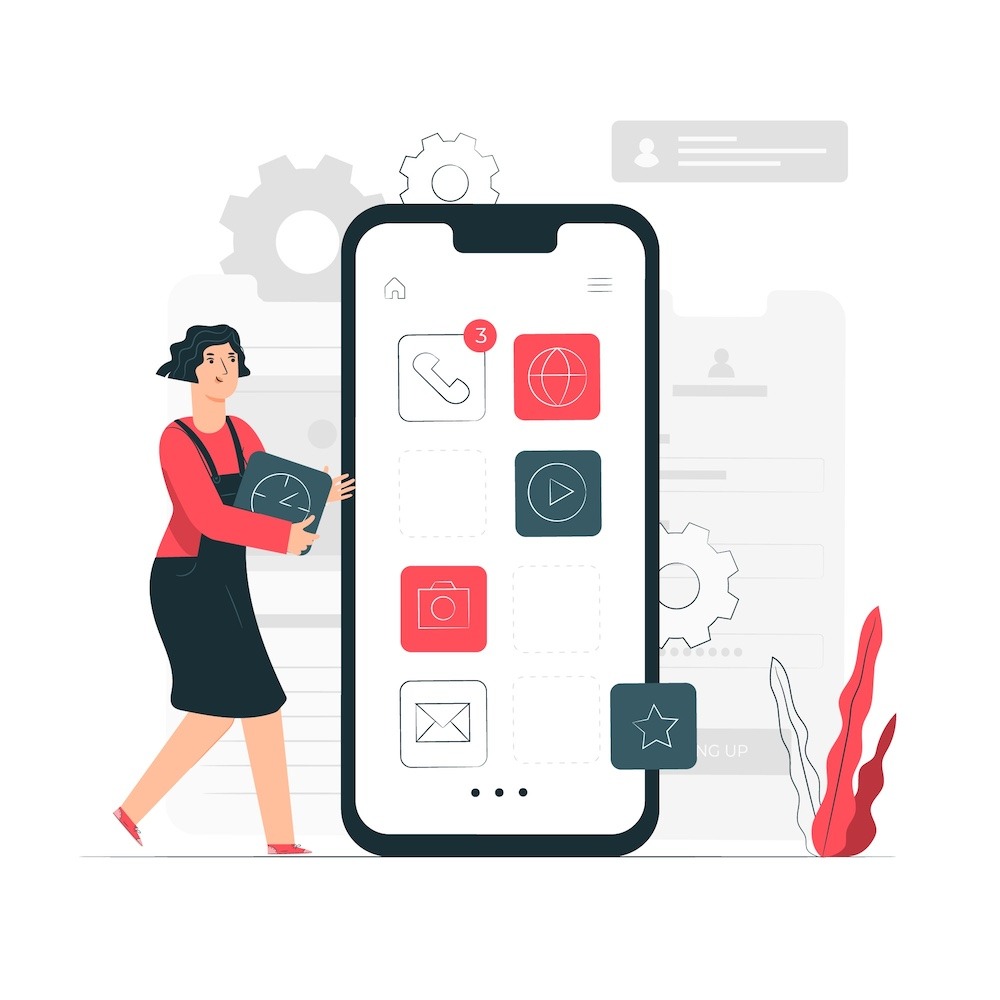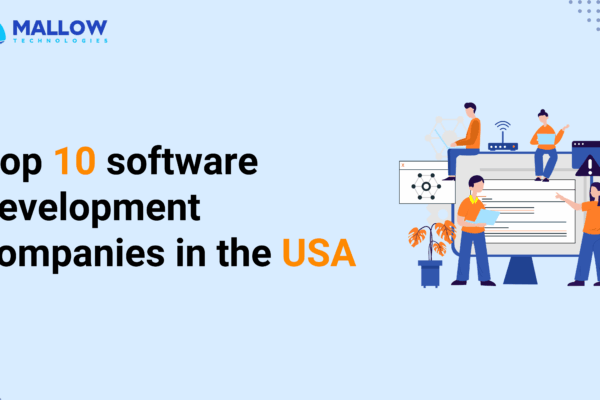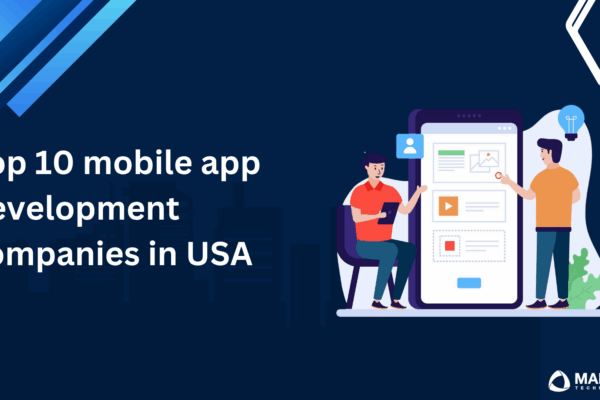You’re diving into this thrilling entrepreneurial journey, bringing your game-changing mobile app idea to life! You’re driven by a clear vision and unwavering passion, ready to tackle challenges. However, a crucial decision lies ahead: should you choose Native development or embrace a Hybrid approach? This choice will significantly impact your project’s success, affecting both costs and timelines. Your understanding of these options is your compass, guiding you through the unfamiliar app development landscape.
At Mallow, clients and potential clients often ask us about which option they should choose. At Mallow, we have hands-on experience in both hybrid and native application development. Their deep understanding of the intricacies, advantages, and limitations of each approach allows them to provide a comprehensive analysis that goes beyond theory. We have a long track record of guiding prospective clients in making informed decisions that align with their goals, whether that means they end up working with us or not.
After reading this article, you will gain a comprehensive understanding of both options, delving into the intricacies of Native and Hybrid development. This will provide in-depth insights into the pros and cons, performance factors, and resource requirements for each approach. Armed with this knowledge, you will be empowered to make an informed decision tailored to your specific needs and goals.
What are Native and Hybrid mobile applications?
Native applications are developed specifically for a particular operating system, such as iOS (Apple) or Android (Google). They are written in platform-specific programming languages (Swift for iOS, or Kotlin for Android) and are optimised to leverage the full potential of the device, providing superior performance and seamless integration with the operating system’s features. In today’s mobile application world, iOS and Android have overwhelmingly dominated the market. Native apps typically offer the best user experience but require separate development efforts for each platform.

Hybrid applications, on the other hand, are developed using frameworks like Flutter, React Native, HTML, CSS, and JavaScript. While Hybrid apps can be less performant than Native apps in terms of providing the exact Native experience and may have limitations in accessing certain device features, they offer the advantage of cross-platform compatibility and faster development timelines.
What are the benefits of Native application development?
- Faster performance & more responsiveness – Native apps are optimized for a specific platform (iOS or Android) and consistently deliver superior performance, particularly in animations and responsiveness. According to browserstack, performance benchmarks show native apps run smoother and faster, especially for graphics-heavy or complex interactions They can fully leverage the device’s hardware and software, providing a smoother user experience, especially for graphics-intensive or real-time applications.
- You want to leverage platform-specific features – If your app requires access to platform-specific features or APIs, such as the camera, GPS, or sensors, Native development is the way to go. Native apps have more straightforward and direct access to these features, ensuring a seamless user experience.
- User Experience (UX) and UI – Native apps can offer a superior user experience by adhering to platform-specific design guidelines and UI elements. This familiarity enhances user engagement and usability. Native development allows for pixel-perfect UI customisation, ensuring that your app looks and feels right at home on the platform.
- Your app needs offline functionality – If your app needs to work offline or with limited connectivity, Native development offers better support for offline data storage and synchronisation.
- Security is a big driver – Native apps can implement robust security measures, including encryption and secure data storage, providing better protection for user data. Independent research by the OWASP Mobile Top 10 (2024) highlights that hybrid apps due to their dependency on WebView and third‑party libraries are more susceptible to issues like insecure data storage and supply‑chain vulnerabilities, whereas native apps can avoid many of these pitfalls with platform isolation.
- Platform updates – Native apps can quickly adopt new platform updates and features, ensuring compatibility with the latest operating system versions and taking advantage of new capabilities.
- Ecosystem integration – Native apps seamlessly integrate with other apps and services within the same platform’s ecosystem. This can enhance user engagement through features like sharing and deep linking.
- Developer community – Both iOS and Android have large developer communities and extensive documentation, making it easier to find solutions to common development challenges.
- Long-term maintenance – Native apps can be easier to maintain over the long term since platform-specific updates and changes can be addressed promptly.
What are the drawbacks of Native application development
- Separate development for iOS and Android – Native apps require separate development efforts for each platform (iOS and Android), which can increase development time and costs. Managing two separate codebases for iOS and Android apps can be challenging, as updates and bug fixes must be applied to both, potentially leading to inconsistencies.
- Limited Cross-Platform Reusability – Native code is not easily reusable across different platforms, resulting in duplication of effort and resources when developing for multiple platforms.
- Higher initial cost – Native app development often involves a higher initial cost due to the need for platform-specific development and skilled personnel.
- Development expertise – Native development requires specialised knowledge in platform-specific languages (Objective-C/Swift for iOS, Java/Kotlin for Android), which ultimately lands you on to manage developers from two different expertise.
- Updates and maintenance – Regular updates and maintenance must be carried out independently for each platform, which can increase ongoing costs.
- Extended testing time due to separate platforms – Native application testing tends to take longer than Hybrid or cross-platform alternatives due to the separate development for each platform. Testing Native apps across various devices, and OS versions can be complex and time-consuming, adding to project timelines.
What are the benefits of Hybrid application development?
- Cross-Platform Compatibility – Hybrid apps can run on multiple platforms (iOS, Android, etc.) with a single codebase, ensuring broader reach and a consistent user experience. Developing a Hybrid app is generally faster than creating separate Native apps for each platform, as much of the code can be reused. With the Android platform maintaining the largest market share in the global mobile ecosystem according to Allied Market Research, cross-platform compatibility becomes increasingly valuable for reaching diverse user bases efficiently. The codebase for Hybrid apps can be largely reused across different platforms, reducing redundancy and effort. Users get a consistent experience regardless of the platform they are using, leading to better user satisfaction and easier maintenance. Testing a single codebase across platforms is more straightforward than managing separate Native apps, reducing testing complexity and time.

- Community support – Hybrid app development benefits from a robust community of developers who contribute to frameworks and libraries, making problem-solving and development easier.
- Cost-efficiency – Hybrid development can be more cost-effective since it requires a smaller development team, shorter development cycles, and fewer resources compared to Native development.
- Access to various components – Hybrid apps can access many Native device features (camera, GPS, etc.) through plugins or APIs, offering a balance between cross-platform compatibility and Native functionality. Various robust Hybrid development frameworks (e.g., React Native, Flutter, Xamarin) offer tools and libraries to streamline development and enhance performance.
- Rapid prototyping – Hybrid apps allow for quick prototyping and iterative development, which can be valuable for testing ideas and gathering user feedback.
- Easier updates – Updates and bug fixes can be applied universally to the entire codebase, simplifying maintenance and reducing the chance of inconsistencies between platforms. Hybrid apps are easier to maintain over the long term because updates and changes can be applied consistently across platforms.
What are the drawbacks of Hybrid application development?
- Performance Limitations – Hybrid applications may not match the level of performance and responsiveness offered by Native apps, especially for resource-intensive or complex applications.
- Limited access to Native features – If your application heavily relies on platform-specific features or hardware, such as advanced camera functions or sensors, Hybrid development may limit your access to these capabilities.
- UI/UX challenges – Achieving a truly Native look and feel can be challenging with Hybrid development, leading to potential user interface and user experience discrepancies.
- Plugin compatibility – Reliance on plugins to access Native features can lead to compatibility issues, especially when plugins are not well-maintained or updated.
- Platform-specific issues – Hybrid applications might encounter platform-specific problems or limitations that require dependencies on third-party sources or complex workarounds.
- Debugging and troubleshooting: – Debugging Hybrid applications can be more complex than Native apps, as issues might arise from interactions between Hybrid and Native code.
- Limited offline functionality – While Hybrid apps can support offline functionality, they might not offer the same level of offline capabilities as Native applications, which can be crucial for certain applications.
- Plugin dependency – The functionality of Hybrid apps often relies on third-party plugins, increasing the risk of compatibility issues, security vulnerabilities, and maintenance challenges.
- Complex build and deployment – Building and deploying Hybrid applications across multiple platforms can become complex, especially as the project scales or when dealing with platform-specific nuances.
- Security concerns – Hybrid applications may be more susceptible to certain security vulnerabilities compared to Native applications, particularly if not properly secured or if they rely on open source libraries.
Choosing between Hybrid and Native application development
| Criteria | Native Application Development | Hybrid Application Development |
| Performance | ✔ High performance and speed | ✖ Might not excel in terms of screen navigation, rendering etc as compared to Native applications |
| User experience | ✔ Native user experience | ✖ Animations and the feel of intuitiveness will not be as high-performing compared to Native. |
| Maintainability of the development team expertise | ✖ Requires platform-specific expertise. Due to its existence this is not a problem. | ✔ You won’t need to manage different teams from different expertise. |
| Budget and timeline | ✖ Higher initial cost and longer development time | ✔ Cost-effective and faster development |
| Cross-platform compatibility | ✖ Separate codebase for each platform (iOS and Android) | ✔ Single codebase for multiple platforms (iOS and Android) |
| Access to native features | ✔ Platform itself provides access to reach out the components like camera, photos etc. | ✖ Limited access, may require plugins |
| Suitability for complex applications | ✔ Ideal for complex, feature-rich apps | ✖ You can build complex applications using Hybrid as well but you might face some challenges because there could be higher dependency on open-source packages. |
| Maintenance and updates | ✖ May require more effort for maintaining two codebases | ✔ Easier updates with a single codebase |
| Code reusability | ✖ Code is platform-specific | ✔ Code can be reused across platforms |
| User interface Design | ✔ Intuitive look and feel on each platform | ✖ May require platform-specific design adjustments. |
| Community support | ✔ Both platforms owns a great community support. | ✔ Both platforms owns a great community support. |
| Debugging and troubleshooting | ✔ Comprehensive and platform-specific debugging tools | ✖ Comparatively more complex than Native applications. |
| Security concerns | ✔ Stronger security measures | ✔ Though you have secured features here but sometimes you might have to be highly dependent on open source packages. |
| Platform-specific issues Development bugs and issues | ✔ Chances of bugs and issues could be slightly higher since there happens to be two codebases | ✖ Since the this is going to be handled in a single codebase, chances of bugs could comparatively be lesser |
| Prototyping and MVPs | ✖ May not be the quickest option for rapid prototyping | ✔ Suitable for quick prototyping |
Questions to ask yourself to help you decide.
In the ever-evolving landscape of mobile app development, the choice between Native and Hybrid approaches remains a pivotal decision. As we’ve explored the nuances of both, each approach comes with its own set of advantages and challenges, and the “better” option ultimately depends on the unique requirements and constraints of your project.
Native development excels in delivering top-tier performance and platform-specific integrations, while Hybrid development offers cost-efficiency and broader platform reach. Your decision should hinge on a thorough evaluation of factors such as performance demands, development resources, timeline, budget, and long-term goals.
Ask yourself these questions before you make a final decision.
- Does your app require high-performance, complex animations, or extensive use of device-specific features?
- Assess the feasibility of incorporating your business application’s distinctive feature into the application through a Proof of Concept (POC) in collaboration with experts to determine its practicality.
- Is it essential to target multiple platforms (iOS, Android, etc.) with a single codebase, or are you primarily focused on one platform?
- What hiring model does your mobile project demand? Do you have in-house developers with experience in native development for your target platforms or you should have to look for outsourcing application development?
- What are your budget constraints, and what is your desired time-to-market? Hybrid development can often be faster and more cost-effective.
- Is it crucial for your app to provide a consistent user experience across platforms, or can you tolerate some platform-specific variations?
- How would the long-term maintenance and rolling out of the updates would be handled?
- Does your app need to work seamlessly offline, or can it rely on an internet connection for most functionality?
Use the above as a basic template as the optimal choice may vary from one project to another based on your unique requirements and constraints.
Next, you need to choose a development framework
When embarking on the journey of app development, exploring the options in hybrid and native frameworks is akin to navigating a landscape of endless possibilities. Hybrid frameworks, like React Native, Flutter and Ionic, offer the allure of cross-platform compatibility, providing a cost-effective solution to reach a broader audience. Meanwhile, native frameworks, such as Swift for iOS or Kotlin for Android, beckon with the promise of unparalleled performance and full access to the device’s capabilities.
Flutter and React Native are popular choices in the Native vs. Hybrid debate, offering a balance between Native performance and code reusability, making them compelling options for cross-platform app development. Curious to know whether Flutter or React Native which one would turn out to be the best option for your application’s development? Check out this article on Flutter Vs React Native for more details on how you can choose the best way for developing your application.
Still unsure about your next step? Feel free to reach out to our team.
Your queries, our answers
Mobile application development involves creating software applications designed to run on mobile devices like smartphones and tablets. These apps can be native (built specifically for iOS or Android), cross-platform (designed to work on multiple platforms), or hybrid (combining elements of both).
Our mobile app development process includes the following stages: requirement gathering and analysis, design and prototyping, development and coding, testing and quality assurance, deployment, and post-launch support. Each stage is crucial to delivering a high-quality application.
To gain deeper insights into the experience of working on a mobile project with Mallow, explore more details here.
The choice between native and cross-platform development depends on your project’s goals, budget, and target audience. Native apps offer better performance and a more tailored user experience, while cross-platform apps allow for faster development and lower costs by using a single codebase for multiple platforms. For a detailed comparison of Native vs. Hybrid development, explore our comprehensive analysis to help you make an informed choice.
Mallow develops mobile apps for iOS, Android, and cross-platform solutions. We use the latest technologies and frameworks to ensure your app performs optimally on the platforms that matter most to your users.
Choosing the right features for your mobile app depends on understanding your target audience, business goals, and budget. We work closely with you to prioritize features that will provide the most value to your users and align with your business objectives.
At Mallow, we offer ongoing app maintenance and updates as part of our post-launch services. This includes regular updates to improve performance, add new features, and ensure compatibility with the latest operating systems. For more details, get in touch with our team.
Yes, Mallow assists with the entire app store submission process, including meeting the guidelines for Apple’s App Store and Google Play. We ensure your app is ready for submission and provide support to help it get approved.
Mallow uses a variety of technologies and frameworks for mobile app development, including Swift and Objective-C for iOS, Kotlin and Java for Android, and React Native and Flutter for cross-platform development. Our technology choices are driven by the specific needs of your project.
Our testing process includes functional testing, performance testing, security testing, usability testing, and compatibility testing across different devices and operating systems. We ensure your app is bug-free and performs optimally before it goes live.
The cost of developing a mobile app depends on several factors, including the app’s complexity, features, platform (iOS, Android, or both), and the development team’s expertise. Costs can range from $10,000 to $150,000 or more. To know more, check out how much it costs to work on a mobile project with us.
The development timeline for a mobile app varies depending on the complexity of the project. A basic app may take 2-4 months to develop, while a more complex app with advanced features can take 6-12 months or longer.
Choosing the right features for your mobile app depends on understanding your target audience, business goals, and budget. We work closely with you to prioritize features that will provide the most value to your users and align with your business objectives.
Yes, Mallow offers comprehensive post-launch support, including monitoring, updates, bug fixes, and enhancements. We ensure your app remains up-to-date and continues to perform well after it’s launched.
A mobile app can enhance customer engagement, increase brand visibility, provide better service through personalized experiences, and create new revenue streams. It also allows you to reach a broader audience by making your services more accessible on mobile devices.
Getting started with Mallow is easy! Simply reach out to us to discuss your project. We’ll work with you to understand your goals, define your requirements, and create a development plan that meets your needs. Let’s bring your mobile app idea to life!.
Security is a top priority at Mallow. We implement advanced security measures, including encryption, secure authentication, and regular security audits, to protect your app from potential threats and ensure data integrity.
To learn more about how we handle and implement these security measures, check out more details here.
Author
Yogesh Murugesh
Yogesh is an accomplished Senior Technical Lead at Mallow, boasting over 11 years of invaluable expertise in the realm of application development. With an extensive background spanning diverse domains, he has consistently delivered applications of the highest calibre. Yogesh's commitment to quality and excellence shines through in every project he undertakes. His career journey is marked by a proven track record of successfully crafting applications that not only meet but often exceed industry standards. His ability to navigate through various domains showcases his adaptability and keen problem-solving skills. Yogesh's contributions have consistently played a pivotal role in driving technological innovation and advancement within his field. Beyond his professional pursuits, Yogesh finds solace and joy in various activities. An ardent cricket enthusiast, he embraces the team spirit and strategic thinking that the sport demands. During leisure moments, he indulges in watching movies, allowing himself to be captivated by different narratives and genres. Moreover, Yogesh cherishes quality time with his child, relishing the role of a devoted parent.



